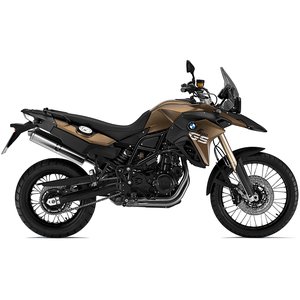BMW F 800 GS (2007-2011): The Gateway to Adventure Riding
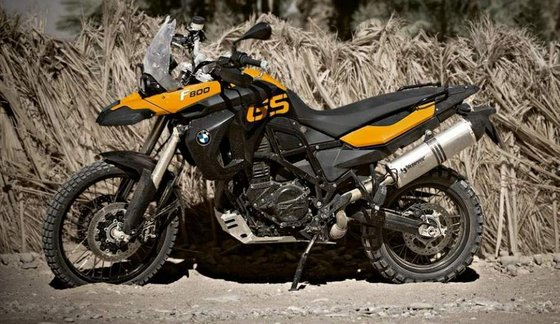
Introduction: The GS Legacy Reimagined
The moment you swing a leg over the BMW F 800 GS, the lineage is unmistakable. This isn’t just another middleweight adventure bike—it’s a calculated evolution of BMW’s iconic GS philosophy, distilled into a lighter, more agile package. Designed to bridge the gap between hardcore enduros and pavement-biased tourers, the F 800 GS became an instant classic for riders seeking versatility without compromise. Having spent days threading it through rocky trails, sweeping asphalt bends, and everything in between, I can confidently say this machine earns its place in the GS pantheon. Let’s dissect why.
Design & Build: Form Follows Function
The Adventure Aesthetic
With its high-mounted fender, 21-inch front wheel, and upright ergonomics, the F 800 GS wears its off-road intentions proudly. The tubular steel frame isn’t just for show—it’s a load-bearing workhorse that integrates the engine as a stressed member. The asymmetrical headlight design and minimalist fairing give it a purposeful, almost industrial look, while optional color schemes like Sunset Yellow or Alpine White add a touch of flair.
Ergonomics: Tall but Manageable
At 880 mm (34.6 in), the seat height intimidates shorter riders, but the narrow profile and optional low seat (850 mm / 33.5 in) make it accessible. Standing on the pegs feels natural thanks to a 26-degree rake and 117 mm (4.6 in) of trail—geometry that balances stability at speed with flickable handling in tight terrain. The aluminum handlebar offers ample leverage, and the rubber-mounted pegs (with removable inserts for grip) absorb vibrations without isolating feedback.
Weight Distribution: A Hidden Strength
The under-seat fuel tank (16 liters / 4.2 gal) centralizes mass, giving the 207 kg (456 lbs) wet weight a surprisingly nimble feel. Compare this to bulkier liter-class ADV bikes, and the F 800 GS feels like a mountain bike in parking lots but still stable at 120 km/h (75 mph) crosswinds.
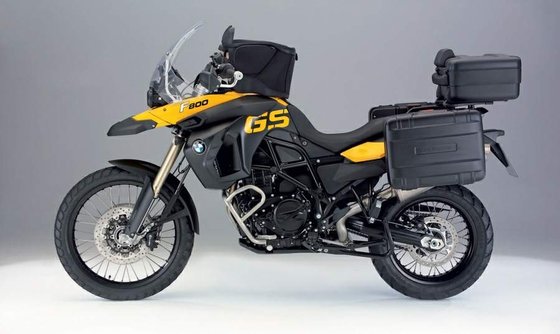
On-Road Performance: More Than Just a Dirt Toy
The Parallel Twin: Smooth Operator
The 798 cc liquid-cooled twin delivers 85 HP @ 7,500 RPM and 83 Nm (61 lb-ft) of torque peaking at 5,750 RPM. On pavement, this translates to effortless cruising at 110 km/h (68 mph) in sixth gear, with enough grunt to overtake without downshifting. The engine’s secret weapon? A secondary balancer shaft that cancels vibrations—a rarity in parallel twins. You’ll feel a faint hum at 4,000 RPM, but nothing that numbs your hands on long hauls.
Transmission & Gearing
The 6-speed gearbox is butter-smooth, though first gear could be shorter for technical climbs. Highway riders will appreciate the tall sixth gear, which keeps RPMs at a relaxed 4,500 at 120 km/h (75 mph). Chain maintenance is a trade-off for the F 800 GS’s off-road agility, but installing a DID X-ring chain (available at MOTOPARTS.store) reduces adjustment intervals.
Braking & ABS
Dual 300 mm front discs with 2-piston calipers provide strong, predictable stopping power. The optional ABS (switchable for off-road use) is a godsend in wet conditions. During my test ride, triggering ABS on gravelly tarmac felt seamless—no unsettling pulsing through the lever.
Off-Road Capability: Where the GS Shines
Suspension: Long Travel, Smart Damping
The 45 mm Marzocchi USD fork offers 230 mm (9.1 in) of travel, while the rear WAD (travel-dependent damping) shock delivers 215 mm (8.5 in). Preload adjustment is tool-free via a handwheel—a thoughtful touch when transitioning from loaded touring to solo trail rides. Over rutted fire roads, the suspension soaks up impacts without wallowing, though aggressive riders might crave rebound damping adjustability upfront.
Tire Choice Matters
The stock Bridgestone Battle Wings are competent 50/50 tires, but swapping to Mitas E-07s (available in our store) transforms loose terrain confidence. During a steep, muddy climb in Utah’s Moab region, the F 800 GS clawed uphill with minimal slippage—proof that tire upgrades unlock this bike’s true potential.
Ground Clearance & Protection
With 190 mm (7.5 in) of ground clearance, only the most jagged rocks threaten the engine casing. Adding a BMW Engine Guard (sold separately) is wise for serious off-roaders.

Competition: How the F 800 GS Stacks Up
KTM 990 Adventure
- Power: 98 HP vs. 85 HP (BMW)
- Weight: 217 kg (478 lbs) vs. 207 kg (456 lbs)
- Verdict: The KTM’s V-twin is a hooligan’s dream, but its taller seat and aggressive fueling make it less forgiving for novices. The BMW’s smoother powerband and lower center of gravity win for multi-day touring.
Yamaha XT660Z Tenere
- Torque: 58 Nm vs. 83 Nm (BMW)
- Tech: Carbureted vs. Fuel-Injected (BMW)
- Verdict: The Yamaha’s simplicity charms purists, but the F 800 GS’s EFI and optional ABS cater to modern riders.
Triumph Tiger 800 XC
- Release Year: 2011 (same as late F 800 GS)
- Triple vs. Twin: Triumph’s 3-cylinder howl vs. BMW’s subdued growl
- Verdict: The Tiger matches the BMW’s specs on paper but lacks the GS’s decade-proven reliability reputation.
Maintenance: Keeping Your GS Adventure-Ready
Critical Service Intervals
- Valve Clearance: Every 20,000 km (12,400 miles)
- Intake: 0.18–0.26 mm / Exhaust: 0.27–0.35 mm (cold)
- Use MOTOPARTS.store’s valve shim kits for precise adjustments.
- Oil Changes: Every 10,000 km (6,200 miles) with SAE 15W-50
- Chain Adjustment: Every 500 km (310 miles) off-road; 1,000 km (620 miles) on-road
Common Upgrades
- Sprocket Kits: -1 tooth front/+2 rear sharpens acceleration for technical trails.
- High-Flow Air Filter: Unlocks smoother throttle response above 5,000 RPM.
- Aftermarket Exhaust: Sheds 4 kg (8.8 lbs) and amplifies the twin’s character.
Troubleshooting Tips
- ABS Sensor Issues: Clean debris from wheel sensors monthly if riding in mud.
- Cold Starts: Ensure battery health—the fuel-injected system demands strong voltage.
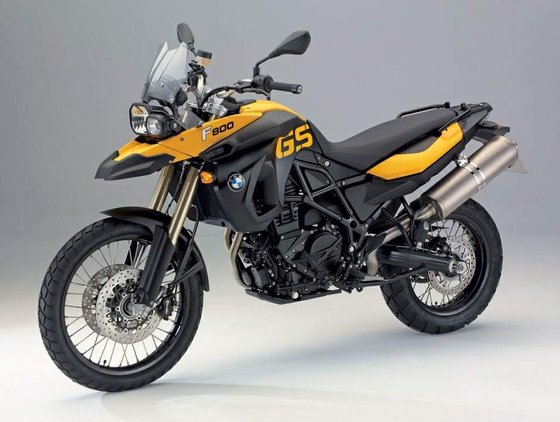
Conclusion: The Swiss Army Knife of ADV Bikes
The BMW F 800 GS isn’t the fastest, lightest, or most high-tech bike in its class. But that’s precisely its strength. By balancing on-road civility with genuine off-road chops, it invites riders to explore beyond their comfort zones—whether that’s a weekend fire road or a transcontinental expedition. Ten years after its debut, the F 800 GS remains a benchmark because it does nothing poorly and everything well. At MOTOPARTS.store, we’re proud to support these machines with upgrades that elevate their already stellar capabilities. Your next adventure starts here.
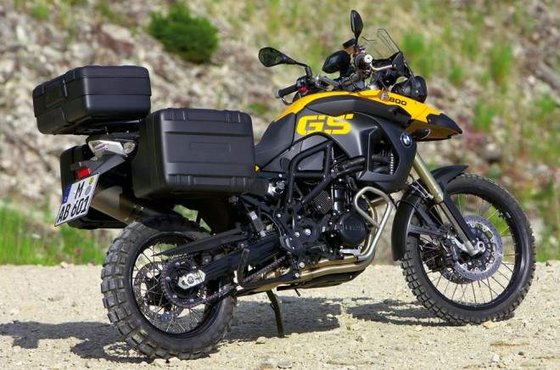







Specifications sheet
| Engine | |
|---|---|
| Stroke: | Four-stroke |
| Max power: | 63 kW | 84.0 hp |
| Max torque: | 83 Nm |
| Fuel system: | Electronic intake pipe injection / BMS-K engine management |
| Max power @: | 7500 rpm |
| Displacement: | 798 ccm |
| Max torque @: | 5750 rpm |
| Bore x stroke: | 82.0 x 75.6 mm |
| Configuration: | Inline |
| Cooling system: | Liquid |
| Compression ratio: | 12.0:1 |
| Number of cylinders: | 2 |
| Valves per cylinder: | 4 |
| Additional | |
|---|---|
| ABS: | Switchable dual-channel (optional) |
| Top speed: | 199 km/h (124 mph) |
| Fuel consumption: | 3.8 L/100 km (62 mpg) |
| Standby fuel capacity: | 4.0 L (1.06 US gal) |
| Dimensions | |
|---|---|
| Wheelbase: | 1578 mm (62.1 in) |
| Dry weight: | 185 |
| Wet weight: | 207 |
| Seat height: | 850-880 mm (33.5-34.6 in) |
| Overall width: | 945 mm (37.2 in) |
| Overall height: | 1350 mm (53.1 in) |
| Overall length: | 2320 mm (91.3 in) |
| Ground clearance: | 165 mm (6.5 in) |
| Fuel tank capacity: | 16 L (4.2 US gal) |
| Drivetrain | |
|---|---|
| Final drive: | chain |
| Gear ratios: | ['1st 2.46', '2nd 1.75', '3rd 1.38', '4th 1.17', '5th 1.04', '6th 0.96'] |
| Chain length: | 116 |
| Transmission: | 6-speed |
| Rear sprocket: | 42 |
| Front sprocket: | 16 |
| Maintenance | |
|---|---|
| Rear tire: | 150/70-17 |
| Engine oil: | 15W50 |
| Front tire: | 90/90-21 |
| Brake fluid: | DOT 4 |
| Spark plugs: | NGK DCPR8E or DCPR8EIX |
| Spark plug gap: | 0.9 |
| Coolant capacity: | 1.3 |
| Forks oil capacity: | 1.53 |
| Engine oil capacity: | 3.0 |
| Engine oil change interval: | Every 5000 km or 2 years |
| Valve clearance (intake, cold): | 0.18–0.26 mm |
| Valve clearance check interval: | 24,000 km (15,000 mi) |
| Valve clearance (exhaust, cold): | 0.27–0.35 mm |
| Recommended tire pressure (rear): | 2.4 bar (35 psi) solo / 2.8 bar (41 psi) with passenger |
| Recommended tire pressure (front): | 2.2 bar (32 psi) / 2.4 bar (35 psi) loaded |
| Chassis and Suspension | |
|---|---|
| Frame: | Tubular steel space frame |
| Wheels: | Wire-spoked (2.15 x 21" front, 4.25 x 17" rear) |
| Rear tire: | 150/70-17 |
| Front tire: | 90/90-21 |
| Rear brakes: | 265 mm disc, 2-piston caliper (optional ABS) |
| Front brakes: | 2 x 300 mm discs, 4-piston calipers (optional ABS) |
| Rear suspension: | Aluminum double-sided swing arm with WAD monoshock, 215 mm travel |
| Front suspension: | 45mm Marzocchi USD fork, 230 mm travel |



